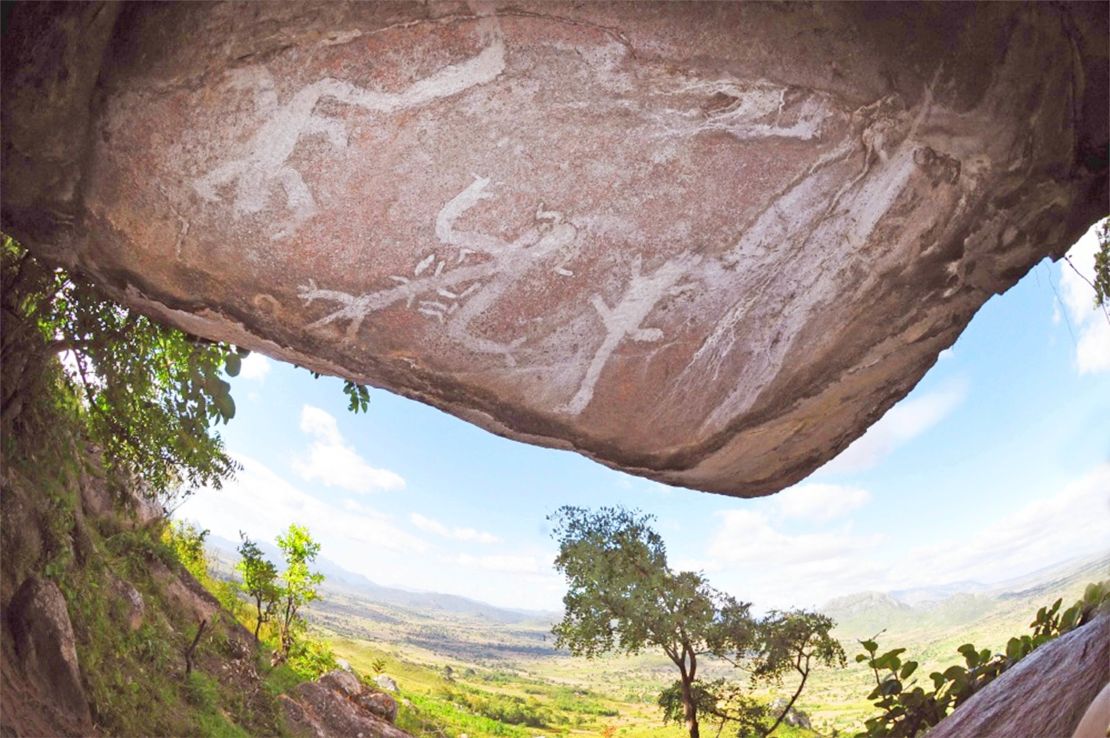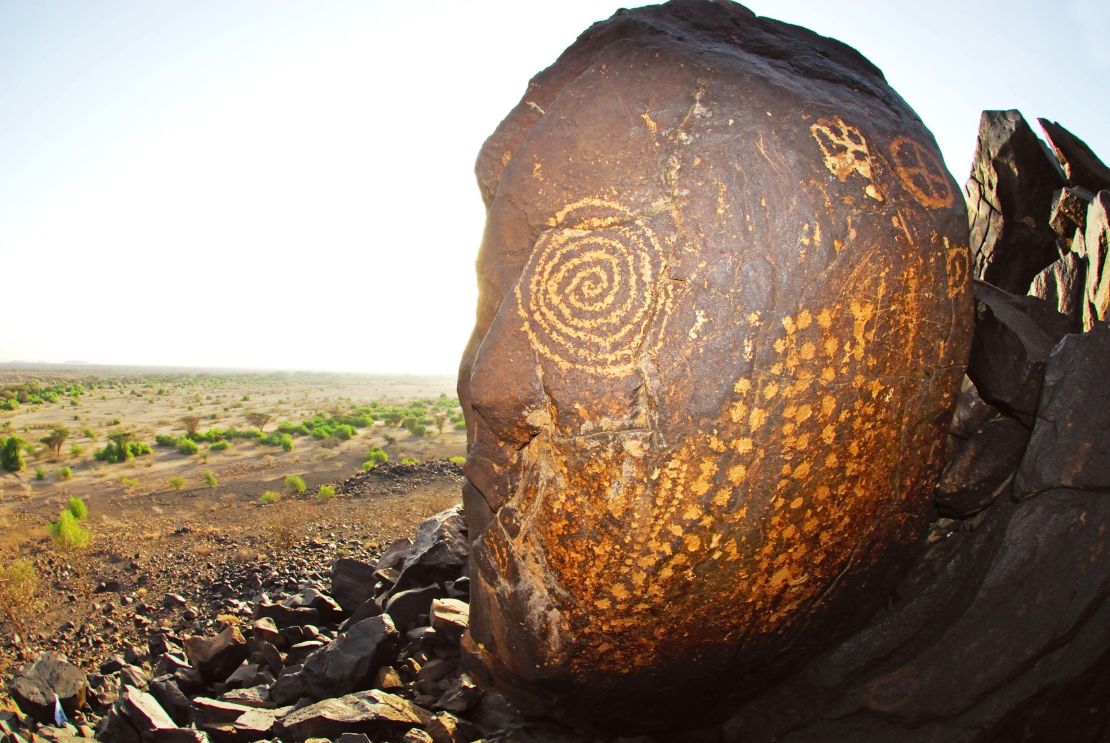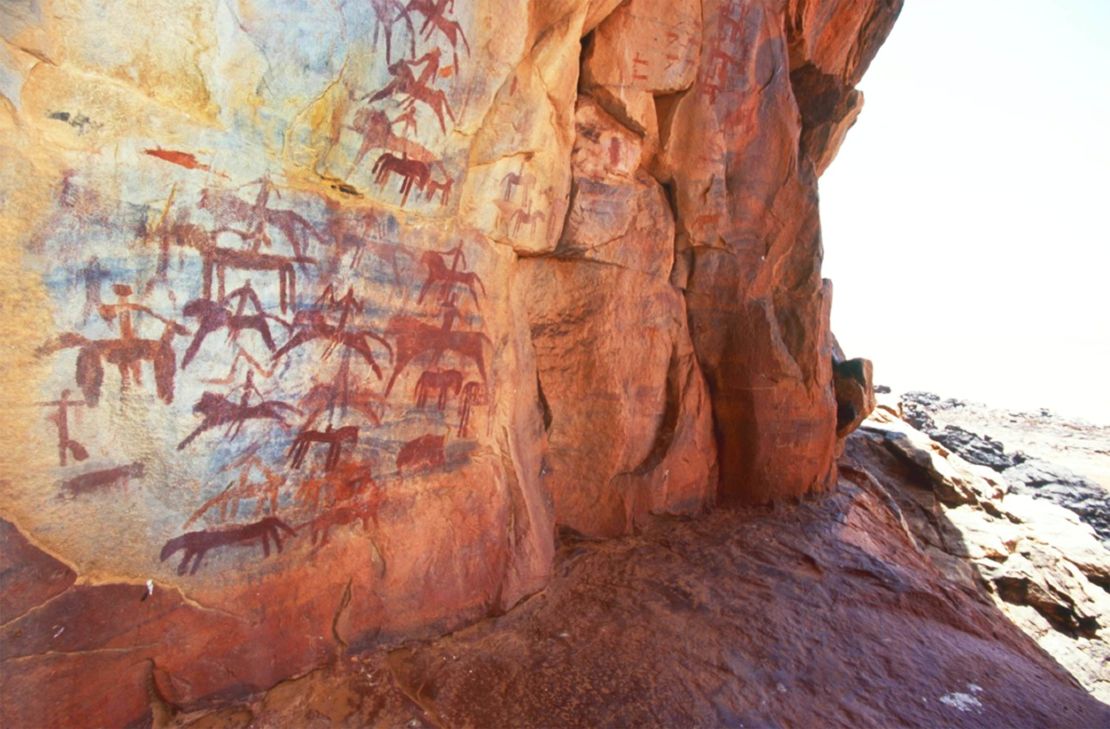Archaeologists in Kenya have discovered the remains of some of the world’s oldest people. But bones here can only tell you so much about these early humans, says rock art expert David Coulson.
“[Bones] don’t tell you about how we lived and loved and dressed and danced,” he argues. “Rock art tells you all that, and that is completely priceless.”
Endangered rock art from Africa
Priceless, and at risk. Quarrying has resulted in these ancient masterpieces being destroyed to make use for crop fertilizer and building aggregate.
Coulson, founder of The Trust for African Rock Art (TARA), has spent the last twenty years discovering, recording and preserving ancient drawings etched onto stone in 20 countries.

“There is a huge sophistication to the art,” he adds. “It may look crude to us,but they have deep meaning. Although sadly most of the meaning has been lost.”
“[But] if we don’t really understand the importance and value of rock art, it won’t be here for long,” adds Coulson’s colleague and community ambassador for TARA, Kabiru Josiah.
Along with the loss of the art’s meaning is the understanding that it is a vital heritage, and more important than short-term gain for some communities.
“They are the custodians and [the art is] at their disposal – either to protect it or to destroy it,” says Josiah. “But once we engage them and show them how important it is for the heritage, then we can succeed in conservation missions.”

It’s not always possible for TARA to succeed however. A recent trip to Kisii in Kenya’s southwest revealed fresh and irreversible damage to the area’s rock art.
At a site dating back more than 1,000 years, Coulson and Josiah arrived to find men quarrying the rock face, a rubble heap replacing what was once an expanse of ancient symbols.
After two years away, Coulson says he didn’t recognize the place he thought he knew.
“I feel so sad that we have lost what was so important to our people, to our history,” says local campaigner Elkana Ong’esa. “We have lost a lot and that’s very unfortunate, and purely out of ignorance and out of greed. It is really a devastating situation.”
One elder told Josiah mournfully that “there is now nothing more to pass on to the next generations.”
“It’s true,” says Josiah, “and it’s a sad story. We might have recorded that – it’s on pictures – but you cannot take the pride in it. You can only say it used to be here, but it is no longer there.”
A way forward
The quarrying is perfectly legal, notes Coulson, but ignorance or lack of awareness is harming local heritage.
“If they don’t know, you can’t blame them,” he says. “I mean, they are doing it for money.”
“Rock art all over the world is fragile, but certainly it feels even more so in Africa,” Coulson adds. Population growth and the increased demand for resources place sites across the continent under increasing threat.

There are success stories however.
The island of Mfangano, rising out of Lake Victoria, is renowned for its rock art, which remains remarkably preserved. Home to the largest group of Abasuba people in Kenya, it is a place in which time has stood still, with no roads or cars.
In what Josiah describes as one of TARA’s “flagship community projects,” the Abasuba tribe protects the artworks and reaps the benefits from tourist and visitor money – money that has been able to fund a local school for 127 students.
“Today we have this generation, the teachers and the parents, but tomorrow the children will be in their place, and they have the rock art in their hands,” says Josiah. “Unless they learn the importance of the art from this age, they won’t see the need to conserve it in the future.”
The warning signposted by Kibii are clear, suggests Josiah:
“Once these things are damaged or gone, that’s it. You can never get them back.”







!["[Bones] don't tell you about how we lived and loved and dressed and danced," argues Coulson. "Rock art tells you all that, and that is completely priceless."](https://media.cnn.com/api/v1/images/stellar/prod/160715160634-african-rock-art-namibia-rain-making-site.jpg?q=w_1600,h_1043,x_0,y_0,c_fill/h_447)













